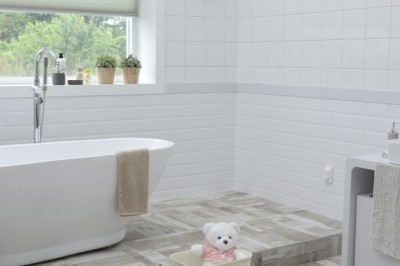Dangers in the Kitchen- How to Avoid Hidden Dangers
The kitchen has the most activity, usually the tightest space, and the most obstacles which can lead to injury. From a food preparation area and dining room to paying bills, the kitchen is the center of activity for todays family. Unfortunately, the kitchen can also has the most hidden dangers of any room in the house- some obvious and some less obvious.
Below is a list of some general rules of thumb to help ensure a safer kitchen.
Think about traffic flow. If your kitchen is anything like mine, there will be a lot of foot traffic flowing through your kitchen. With that in mind, it is important place key appliances in areas where that foot traffic will not interfere with your cooking. Locate microwaves conveniently above the floor to avoid reaching to retrieve food. Slide-out trays and bins in base cabinets make storage items more accessible and eliminate bending. Avoid putting a range near an entrance or exit. And lastly, avoid sharp corners on the ends of countertops, especially islands and peninsulas, by having them rounded.
Use proper lighting. Good general lighting, supplemented with proper task lighting thats clearly focused on a work surface, can greatly decrease your chance of injury while preparing a meal. Also, the lighting should not produce any glare or shadows on the surface.
Find a safe cooktop. Avoid being scalded by steam from a boiling pot by staggering burners on your cooktop or have one straight row of burners. Choose a unit with controls along the side or in the front. When children are around, it is also important to install knob guards on the stove to prevent a child from accidentally turning on a burner and severely burning themselves, or even worse.
Regulate water temperatures. This is particularly important if you are going to have children using the faucets in the kitchen. Install faucets with anti-scald devices that prevent water temperature from rising to dangerous levels, or buy pressure-balanced valves that equalize hot and cold water. Faucets are also available that can be pre-programmed to your desired temperature setting.
Keep a fire extinguisher within reach. While it is best to have a fire extinguisher within plain site, it is not always going to fit in with your decor. If that is not an option, keep it under the sink or in a pantry that is easily accessible from every point in the room. Never store an extinguisher near or under a cooktop or range. If a fire is to occur, those areas will likely be the cause and make an extinguisher stored in that area unreachable.
Use slip-resistant flooring. The dangers of slipping and falling, especially when you may be carrying hot food, is pretty obvious. A slip-resistant material on your floor, such as matte-finished wood or laminate, textured vinyl or a soft-glazed ceramic tile, will do the trick. If you select tile or another smooth surface, try using a throw rug with a non-skid backing as an added precaution, especially around areas that get wet.
The codes vary from state to state and in some cases, city to city, so it is important to consult a professional if you are not 100% sure of the building codes. There are many free resources out there that can guide you through some of the industry standards if you do a quick search on the internet.
For more kitchen cabinet articles and kitchen cabinet facts, check out this website. This is also a great resource for finding kitchen cabinets at 30-40% below retail prices






















